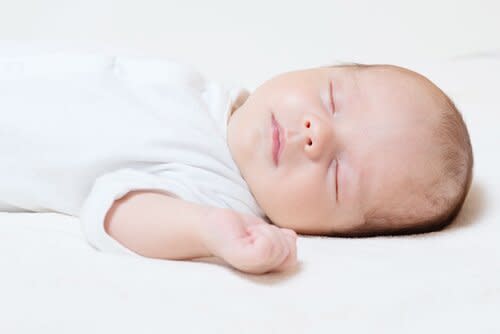Study Confirms You Shouldn't Leave Your Baby Asleep in a Car Seat, Swing, or Bouncer

Ventura/Shutterstock
Babies usually need between 12 and 16 hours of sleep each day depending on their age. But where they sleep can be even more important than how much they sleep.
A new study published in Pediatrics looked at more than 11,700 infant sleep-related deaths over the course of 10 years and found that 3 percent of babies (or nearly 350) died in sitting devices, including car seats, bouncers, or swings.
The majority of these deaths occurred in car seats, and they were “not being used as directed" more than 90 percent of the time. “While car seats are always the best place for babies when they are being transported in a vehicle, that doesn’t mean they are the safest place when they’re sleeping outside of the car,” said study co-author Jeffrey D. Colvin, M.D., J.D., FAAP.
RELATED: Mom Tearfully Speaks Out After Toddler Dies Sleeping in Car Seat: 'No Family Deserves This'
When sitting devices are used in place of crib or bassinet, infants can die by falling, flipping over and suffering positional asphyxia, or from improper buckling of the straps.
This study follows a similar one published in the Journal of Pediatrics in 2015, which also found that "sitting devices" like car seats, swings, and bouncers can lead to injury and even death if babies are allowed to sleep in them.
Researchers examined the deaths of 47 young children under the age of 2, all of which occurred while in a device made for sitting or carrying. Two-thirds of the deaths occurred in car seats, while the rest occurred in slings, swings, bouncers, and strollers.
Asphyxiation (positional or strangulation) was the cause of death in 46 cases; 52 percent of the deaths were caused by strangulation from the device's straps.
Sleep-related deaths are the number one cause of death in kids between 1 and 12 months old. To avoid injury or death, experts urge parents to never, under any circumstance, leave infants and young children unsupervised—sleeping or awake—while in these devices. They also advise that car seats should only be placed on a firm, stable surface and any buckles should be fastened correctly.
The best place for your baby to sleep is on her back, in a crib that has a firm mattress and is free from any loose bedding. To be sure your baby's sleep environment is as safe as can be, check out the American Academy of Pediatrics' Safe sleep guidelines.
